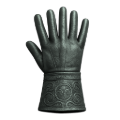
The Princess Bride 1987
This transmission presents itself as a fairy tale, but begins with a sick child being read a book by an elder — suggesting the events may be fictional even within their own fiction. This structural redundancy appears intentional and is not questioned by the characters.
The primary narrative involves a young woman named Buttercup, who believes her beloved Westley is dead and agrees to marry a prince instead. The prince is unlikable and possibly complicit in rodent-based combat arenas. Westley is, in fact, alive — now disguised as a pirate, which is apparently standard practice when overcoming mortality.
He rescues Buttercup, but not before encountering multiple humans with distinct motives: one seeks revenge for a murdered parent, one enjoys rhyming, and one is large. Together, they form a reluctant alliance, storm a castle, and outwit a series of moderately intelligent adversaries.
Death is treated as reversible if accompanied by friendship and light electrocution. Swordplay is common. Betrayals are expected. The narrative leans heavily on declarations of love, preposterous schemes, and repeated use of the word “inconceivable” by someone with a tenuous grasp of its definition.
By the end, good triumphs, villains are humiliated, and the child listening to the story requests a repeat performance — despite initially protesting against romance, sword fights, and sentiment.
Conclusion: Humans seem to understand that their world is chaotic and cruel, yet persist in telling themselves stories where love wins, revenge is tidy, and resurrection is a group activity. They find comfort in the idea that persistence is enough — even when logic is not.
This record confirms that Earthlings are susceptible to narrative manipulation, especially when delivered with charm and fencing. Nebulon may achieve full control of their belief systems simply by rhyming occasionally and never skipping to the boring parts.
